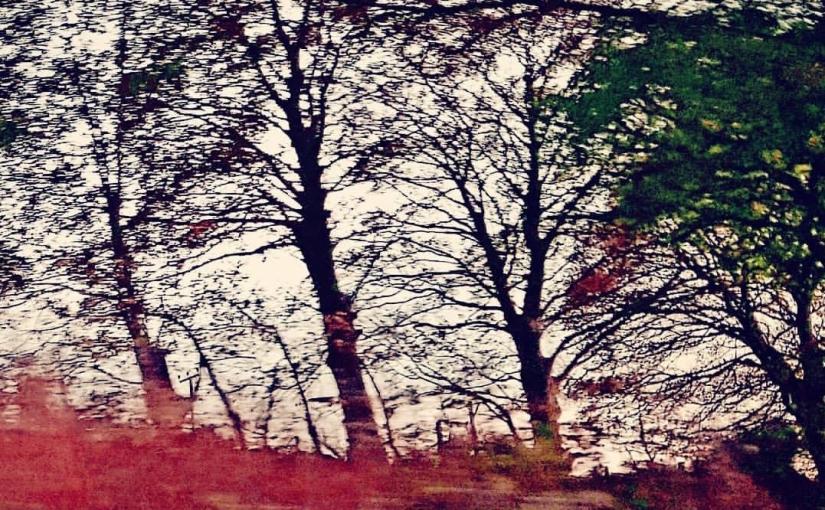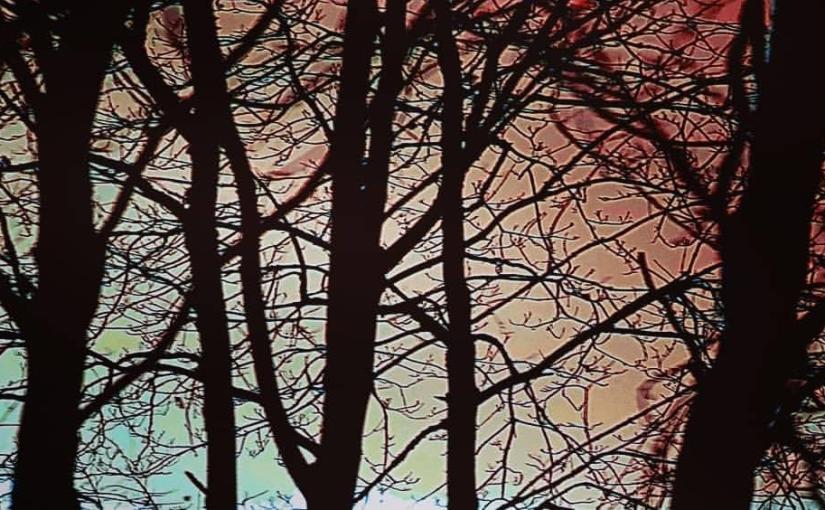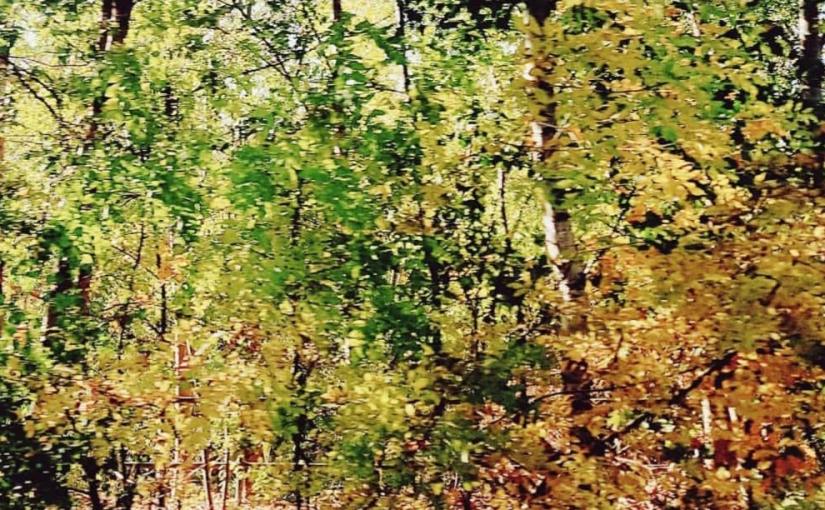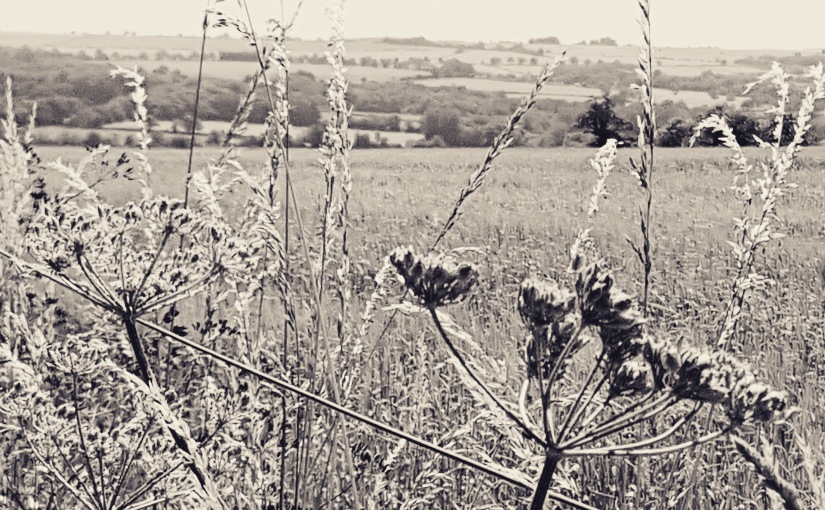Some years it feels like summer will last forever and some years it feels like summer has just arrived, but every year there is a day when you notice that summer is ending. It seems like only yesterday that the apple tree dripped with blossom and now it is burgeoning with hard, green fruit. Yes, the swallows still dance and dive in deep blue skies, but the shadows they speed over, somehow, seem longer. Midges bob and weave in thick, thermal sunbeams but the breeze which buoys them has a sliver of frost on its edge. When you look out across the landscape, you notice that every shade of green is tinged with gold and brown.
That’s the day you know that summer is coming to an end.
And that’s the day you notice the skylarks’ song has changed.
Yes, the tune still bubbles and rolls as it always does, but there is a quality to it you struggle to describe. The only word which seems to fit is … sadness. It’s as if the skylark’s song has become infused with sorrow and un-cried tears. What is it that makes the skylark’s song so sad? Well, it’s because they are singing the song of John Barleycorn.
Old John Barleycorn’s farm was small but productive. What it lacked in acreage, it more than made up for in quantity. Every year, his fields swirled and swayed with deep golden grain, so that, in the later summer sunshine, it looked like as if a waterfall of molten gold had spilled across his land. Barleycorn was famous not only for the quantity but also for the quality of crop his farm produced, the malty taste of his grains making distinctively wholesome bread and dark, frothy ale. The old farmer was a cheery soul and generous to a fault; if one of his fellow villagers was down on their luck, Barleycorn always found supplies of grain to help them out. He was not a greedy man; he saw no use in riches. In fact, the greatest riches he owned, he freely told everyone, were his three beautiful daughters whose hair was as golden as the crop in his field.
The good news from John Barleycorn’s farmstead spread far and wide until, one warm, rainy evening, it fell upon the ears of three sweaty, avaricious young men in a steamy side-street tavern. The first commented on the surprising quality of the ale which had been slopped into his tankard, and was told by the tavern owner that it came from the grain of old John Barleycorn. The second enquired further about the famous old man and was told about his crop yield and generous nature. The third asked where Barleycorn lived; the tavern owner freely told them the name of the village, and also encouraged them to seek out Barleycorn’s daughters, who were as beautiful as their father was generous. The three men swiftly finished their ale and slunk off into the dank, humid night.
They eventually arrived in the village on the sweltering first day of the harvest and headed straight to the Barleycorn farm. They presented themselves to old John as penniless soldiers, fresh from the battle fields, who needed work and a place to lay their heads at night. The kind old man took the three scoundrels at their word and hired them on the spot to help bring in his fulsome golden harvest. It was hard work in the sun-baked fields, yet still the three men took the opportunity to look around. To their delight, they discovered that the old man’s harvest really was as plentiful as they had been told and, even better, that Barleycorn’s daughters were even more beautiful than the tavern owner had said. And so, as they scythed and baled, as they threshed and winnowed, they formed a terrible plan.
Eventually the fields were cleared and the bumper crop had been safely stowed in the barn. The stubble had been burned and ploughed back into the earth, so that the fields were ready for sowing in springtime, and the Barleycorn family were ready for winter. John had been particularly kind to the three supposed soldiers and kept them employed longer than the other labourers because they had seemed to work so hard. Every night the family had shared food, provided them with a bed and rewarded their effort with coins. But, eventually, as the summer mornings became draped in the dewey cobwebs of autumn, it was time to ask them to go. After supper one night, Barleycorn walked out under a harvest moon with the men, thanked them for their help and told them that they would be welcome to return in springtime to help with planting.
But the three men had no intention of leaving and laughed at his suggestion that it was time to go. They weren’t going to leave, they told him; they were going to take Barleycorn’s farm, and his three beautiful daughters, and use them as their own. At first he thought they were joking, as they idly kicked the clods of earth beneath their feet, but, when the first scoundrel pulled a knife out of his boot, Barleycorn knew they had told him the hideous truth. The old man started back to the house, calling to his daughters for help, and so, quick as a flash, the three men grabbed him, held him and slashed his throat like an animal. The poor old soul slumped to his knees as his blood frothed and fountained from his body, feeding the furrows in the hungry earth. The three blood splattered scoundrels howled with derision as old John Barleycorn breathed his last under the blood red moon. They buried him deep beneath the fields, where the plough would never find him.
Oh, the lies they told his golden haired daughters when they asked where their father had gone! Instead of telling how they had butchered and buried him, the scoundrels announced that, on a whim, old Barleycorn had decided to go travelling. The daughters were frantic with worry.
“When will our father return?” they cried.
“In three harvests’ time” lied the first young man.
“We shall share the work between us, sisters, and await father’s return” the eldest daughter sagely advised.
“Oh no,” the second scoundrel smirked, “Your father said that the farm was to be divided, equally, into three, between us – as a thank you for all our hard work with the harvest.”
“And as a further token of his gratitude,” continued the third “he told us to take one of you, each, to do with as we please.”
That night, Barleycorn’s three beautiful daughters reaped a bitter harvest. The young men treated them as badly as the crop they had threshed and winnowed in the fields. By morning, the daughters were as bruised and broken as the chaff on the dark barn floor. As autumn turned to winter, the scoundrels’ hearts became harder than the frozen ground. To secure their claim to the land, they eventually married the daughters one dark January morning, when no one could see the bruises on their beautiful wives’ faces. Three bitter marriages followed the sad little ceremony, each union more sharp and biting than the hoarfrosts which petrified the wintery hedgerows.
And so, in springtime, the three young men went out into their fields and sowed them, expecting a bumper crop.
But nothing grew. The fields remained barren and winter-like throughout a beautiful spring and a balmy summer. The three men were horrified – these fields had produced bumper crops year after year for old Barleycorn: what had gone so wrong?
And then, on a sultry Lammas morning, the first scoundrel was walking through the empty fields when he saw a small, dense patch of golden barley which had seemingly shot up overnight. He sprung towards it like a striking adder, eager to harvest some form of crop from these fields, no matter how small. But, as he approached, he noticed that the barley was growing in the shape of a man’s body, as if it had fallen on the ground after some terrible accident. With a spike of horror, the young man realised that it was growing on the exact spot where he and his fellow murderers had butchered and buried old John. He raced back to the farm, burning with terror and rage, grabbed a scythe from the barn and stalked back out to the fields. The scoundrel hacked and slashed at the small patch of barley until it lay, utterly destroyed and scattered across the otherwise barren field. But destroying the crop was not enough – he now wanted to destroy the earth from which it had grown. He started hacking and gouging at the loamy soil, as if he would dig down to Barleycorn’s body itself.
And then, during a particularly vicious swipe of the blade, the scoundrel sliced a deep, fatal wound into his own leg. The shin bone splintered, his foot snapped from under him and blood blossomed from the gaping wound. The young man fell to the ground with a howl, cursing the day he had crossed old Barleycorn. As the earth feasted on his blood, darkness took the young scoundrel. By the time his friends found him, he was as cold and dead as the field on which he lay.
A meagre autumn gave way to a ravenous winter. The Barleycorn daughters suffered more under the pair of young men than they had under the three. They were tyrannous with the girls, making them beg and steal scraps from the villagers to sate their guilty hunger. As there was no spare money to employ helpers, in springtime the daughters were forced to join their husbands in the sopping wet fields to sow a new crop, which they desperately needed.
And still the fields remained barren. Despite perfect weather throughout the spring and summer, no crop grew in the Barleycorn fields.
And then, on a thunderous Lammas morning, the second scoundrel was walking the fields when he saw a small, dense patch of barley rippling under the glowering skies. He dived towards it, like a hawk after its prey, joyed by the belief that the crop had sprung up overnight. However, to his horror, he saw that the crop grew in the shape of a man’s body, as if it had been thrown to the ground after a terrible accident. A crack of terror echoed through him as he realised that the barley grew on the exact spot where he and his accomplices had butchered and buried John Barleycorn. As the terror sparked through him, he raced back to the farmhouse, grabbed a scythe from the barn and flew back to the fields to start cutting it down. Remembering what had happened to his friend the year before, the second scoundrel scythed more carefully and soon held a small, bountiful bundle of barley in his bloody, blistered hands. He raced into the village and gave the barley to the brewer who turned it into the most delicious, deep frothy brown ale. The young man raced to the farmstead, where he victoriously slammed the ale keg down in front of the others. As it has been he who had found and cut the barley, he announced, he would be the first to drink a draught of the beautiful brown ale. The others wearily agreed.
And so he started to drink. And drink. And drink. So delicious was the ale that the young scoundrel simply could not stop himself! So deeply did he drink that his stomach burst like a dam in winter. The young man coughed and choked, he tried to gurgle out a curse on John Barleycorn but the others could not understand him. Eyes bulging, red-faced and drowned, he fell down dead.
A wild and wicked winter followed. A cruel easterly wind brought early snow which shrouded the land, almost until it was time to light the Beltane fires. The remaining young man was forced to beg in the frozen streets of the village. He used the name of old Barleycorn to wring generosity from his neighbours, but refused to share his slim picking with the Barleycorn’s starving daughters. When spring arrived, late and waterlogged, the tyrannous young man made the girls seed the field on their own, claiming he was too ravenous, too enfeebled to join them in their task. The daughters’ backs bent and broke from the onerous task, yet they still took care to place every grain in the perfect position, praying that a bumper crop would follow.
But still the fields remained barren.
And then, on a clear Lammas morning, the third scoundrel was walking in the empty fields when he saw a dense patch of barley, blowing in the warm breeze. At once, he span towards it, like a spider towards its prey. But, just like his fellow murderers before him, he found that the golden barley grew in the exact shape of a man’s body, on the very spot where they had butchered and buried old John Barleycorn. He scuttled back to the farm in horror, grabbing a scythe from the barn before carefully cutting down the crop. When it had been gathered in, he ran to the miller who ground the grain into dusty white flour. The young man took the flour to the baker and, shortly after, he was the owner of the largest loaf of bread the village had ever seen. He raced back to the farmstead with his prize but, rather than share it with Barleycorn’s famished daughters, he decided to devour the whole thing himself.
And so he set about ripping the bread into chunks and stuffing handfuls of it into his hungry, salivating jaws. However, soon the bread started to dry out his mouth, his throat and his stomach. He began to choke on the crust and crumb of the malty brown loaf. The young man coughed and choked, he tried to gasp out a curse on John Barleycorn but the words remained unspoken. Before long, pale faced and open mouthed, the third and final scoundrel lay dead on the farmhouse floor.
The daughters wept with happiness, finally free from the tyranny of the three young men who had scourged their farmstead. Although they were alone and frightened, they remembered their father’s apparent promise to return after three harvests and so began to scour the horizon for a sign of his return. Through the darkening windows, the eldest daughter saw signs of movement on the top of the furthest field and so, as the sun began to set, they walked out to see what it was.
In the last golden light of Lammas, as swallows swooped over lengthening shadows and midges danced on the sharp edged breeze, the daughters found themselves standing around a small patch of glorious golden barley, which had grown in the shape of a man.
And slowly they realised that the crop had not just grown in the shape of any man – the barley had grown in the shape of their beloved father. A small trickle of blood seeped from the earth and gathered at their feet.
In an instant the three daughters realised exactly what had happen on that hillside three harvests ago; they saw that their father had been butchered and buried by the three young men who wanted to take everything he had. The girls began to cry, tears of remorse, tears of loss. They cried so much it was as if fresh springs had opened on their cheeks. The tears which the girls cried rained down upon the earth which has been barren for so long. The splashes became puddles, the puddles became streams, the streams became rivers and the rivers became an ocean until, eventually, the whole field had been watered by the tears the daughters cried for their father.
Suddenly, a crop of barley more bounteous and more brilliant than had ever grown in Barleycorn’s fields sprang from the freshly watered earth and swallowed the daughters. For a brief, beautiful second the only sound in the field was that of the harvest rippling and rushing in the breeze. And then, from out of the waving, golden torrent, shot three skylarks. A villager, who passed by shortly after, commented on how beautifully sad the skylark’s song was but was more concerned that he had found the Barleycorn farm empty, apart from the young man’s body. What he failed to realise was that the skylarks were Barleycorn’s three beautiful daughters, transformed by their grief.
And that is why, when you realise that summer is starting to fade, when you see the long shadows and feel the cold edge to the breeze, you will notice that the skylarks have changed their tune and are singing a sadder song over the fields of wheat and barley.
They are singing the song of their father, the song of John Barleycorn.
Photograph by Karin Brown at Imbolc Photography (https://brownkcd.wixsite.com/imbolc)









